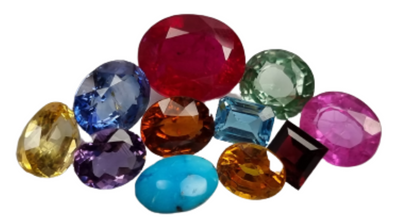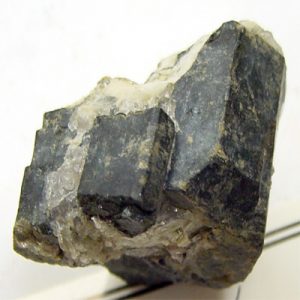Triphylite: Gemstones Information
Triphylite is a rare phosphate mineral that belongs to the lithiophilite group. Its chemical composition is typically represented by the formula Li(Fe2+,Mn2+)PO4. Triphylite forms monoclinic crystals, although it is more commonly found in massive or granular forms. The mineral was first described in 1819 and was named “triphylline” due to its three cleavage directions, though the term is no longer used.
Occurrence and Distribution:
Triphylite is primarily found in lithium-rich pegmatites, granite pegmatites, and certain metamorphic rocks. It often occurs alongside other lithium-bearing minerals such as spodumene, lepidolite, and amblygonite. Significant deposits of triphylite have been reported from various locations worldwide, including Sweden, Finland, Brazil, the United States (especially Maine and New Hampshire), and Australia.
Physical Properties:
Triphylite typically appears as brown to black in color, with a submetallic to vitreous luster. It has a Mohs hardness of around 5.5 to 6, making it moderately hard. The mineral is translucent to opaque and may display various shades of brown, red-brown, or black. Triphylite’s streak color is usually brownish-white to grayish-white.
Chemical Composition:
Triphylite is a phosphate mineral, meaning it contains phosphorus as a significant component of its chemical structure. Its composition includes lithium (Li), iron (Fe), manganese (Mn), and oxygen (O), with the occasional presence of other elements such as aluminum (Al) and magnesium (Mg). Variations in the relative proportions of iron and manganese give rise to different varieties of triphylite.
Uses and Applications:
Triphylite has limited commercial applications compared to other lithium-containing minerals. Historically, it was sometimes mined as a source of lithium, particularly in the context of early lithium extraction efforts. However, its significance as a lithium ore mineral has diminished with the development of more efficient extraction methods and the discovery of larger, higher-grade lithium deposits.
In addition to its role as a lithium ore, triphylite may be collected as a mineral specimen by enthusiasts and collectors. Specimens with well-defined crystals or attractive coloration may have aesthetic value to collectors interested in rare minerals or mineralogy.
Geological Significance:
Triphylite’s occurrence in lithium-rich pegmatites provides valuable insights into the geological processes associated with the formation of these unique rock formations. Pegmatites are known for their enrichment in rare elements and minerals due to the slow cooling and crystallization of magma. Understanding the distribution and behavior of lithium-bearing minerals like triphylite within pegmatites contributes to our knowledge of geological processes and ore formation.
Conclusion:
Triphylite is a rare phosphate mineral with a limited range of applications, primarily occurring in lithium-rich pegmatites and granite pegmatites. While it has historically been of interest as a source of lithium and as a mineral specimen for collectors, its commercial significance has declined over time. Nonetheless, triphylite’s presence in geological formations provides valuable insights into the processes of pegmatite formation and the distribution of lithium and other rare elements in the Earth’s crust.





